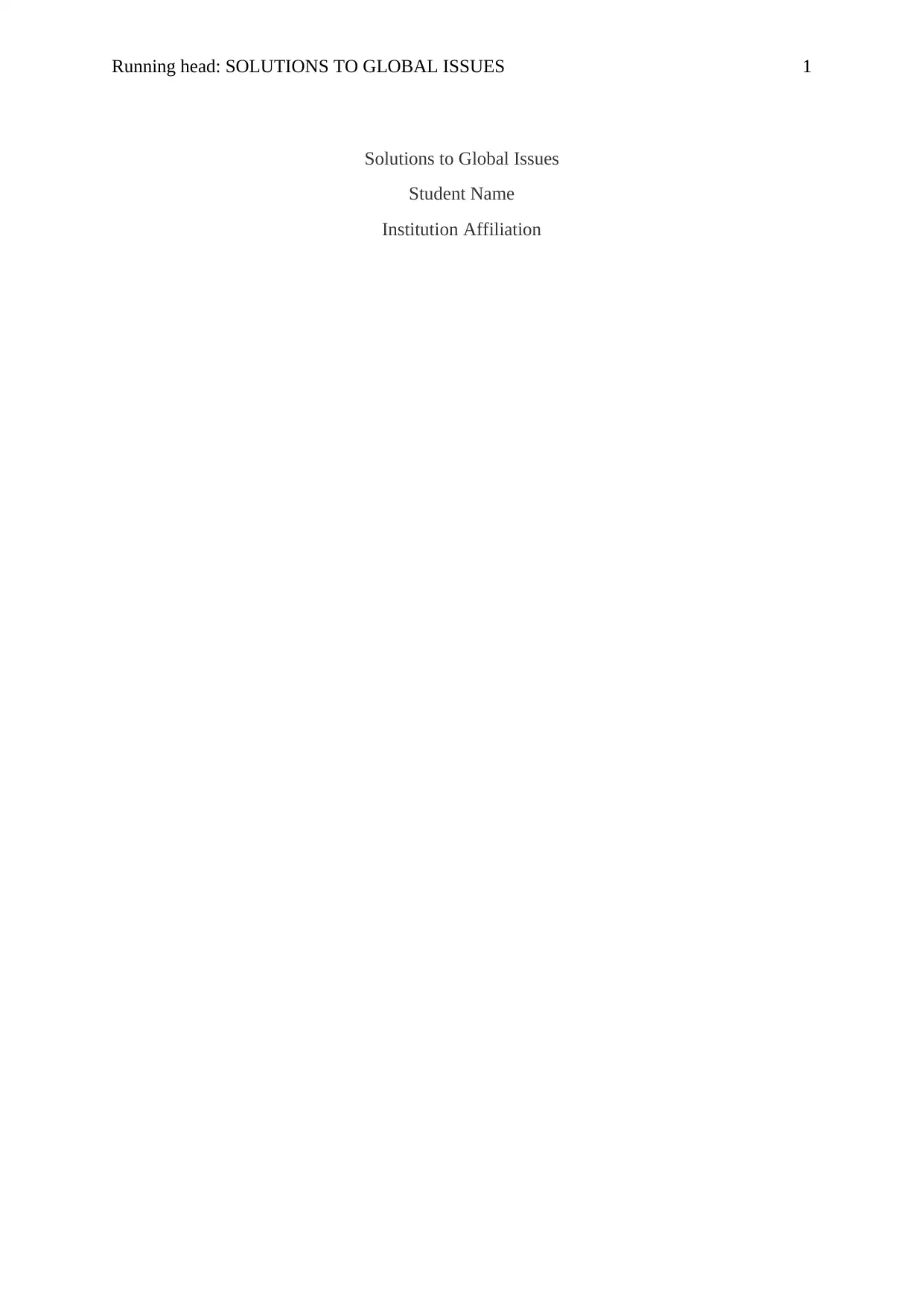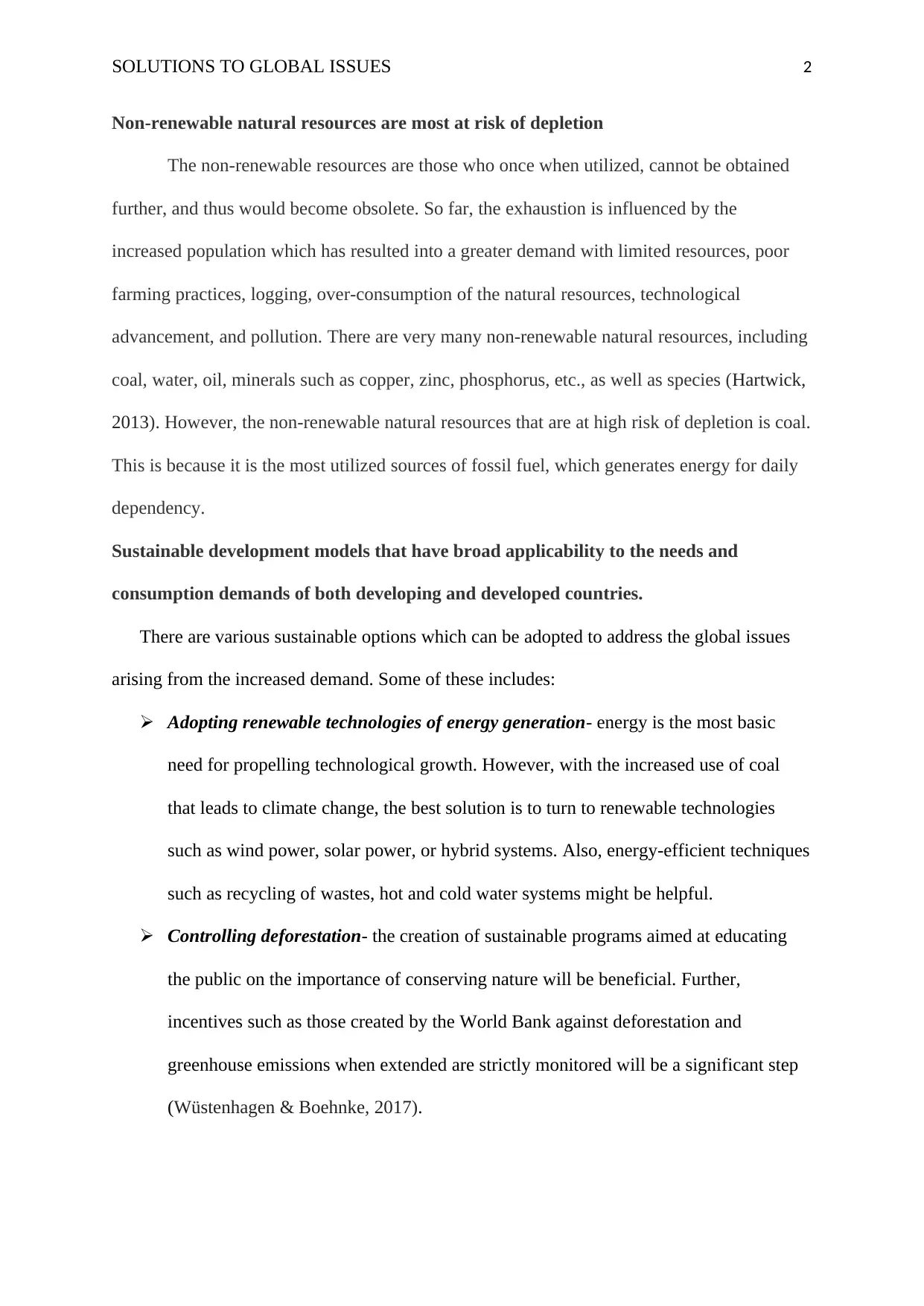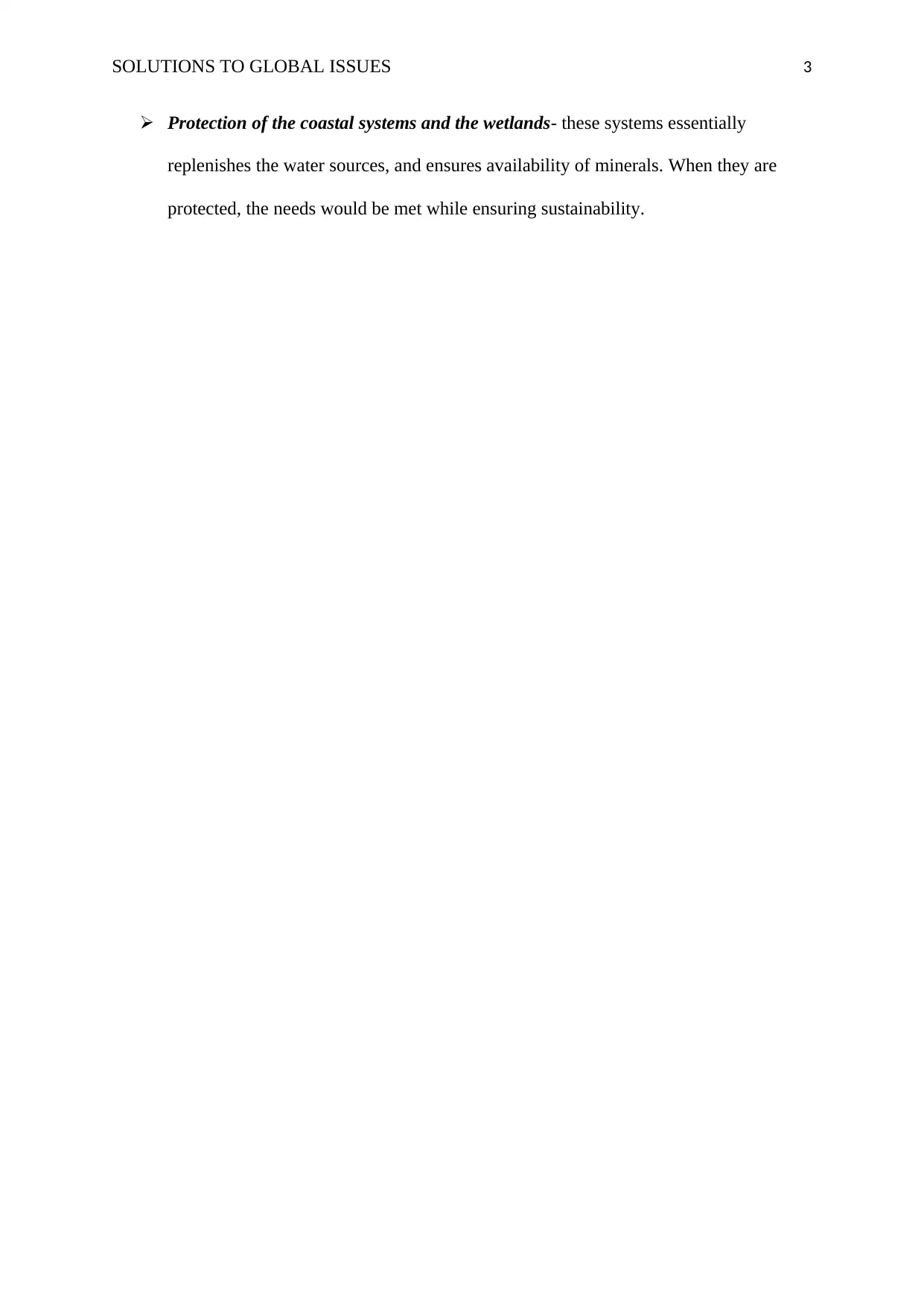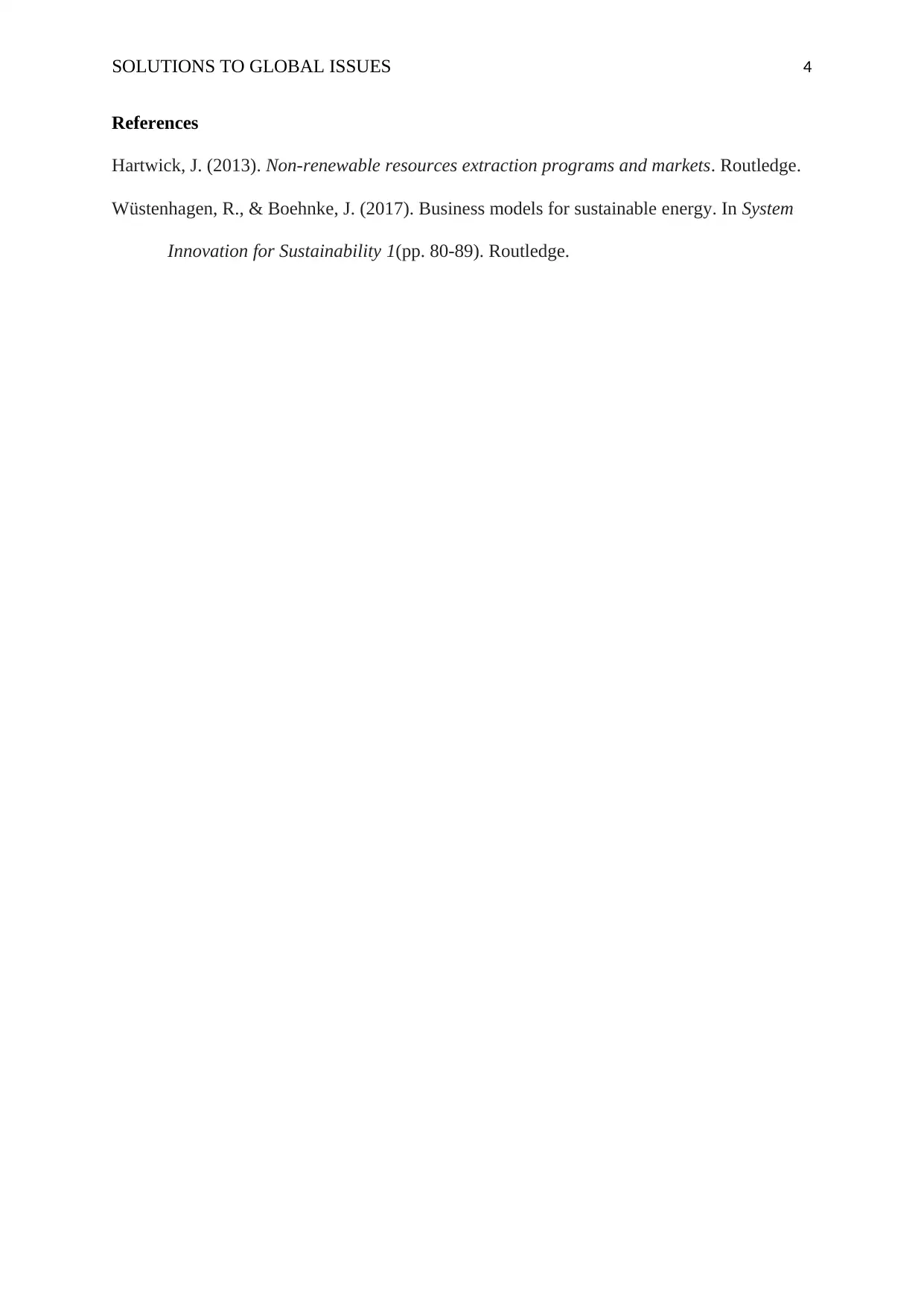Non-renewable Resources and Sustainable Solutions: Global Challenges
VerifiedAdded on 2022/10/14
|4
|423
|16
Report
AI Summary
This report addresses the critical issue of non-renewable resource depletion, particularly focusing on the implications of utilizing coal as a primary energy source. It highlights the risks associated with the over-consumption of these resources, including environmental degradation and the impacts of climate change. The report then proposes several sustainable solutions, such as adopting renewable energy technologies like wind and solar power, implementing energy-efficient techniques, controlling deforestation through public education and incentives, and protecting coastal and wetland ecosystems. These strategies aim to balance resource consumption with environmental preservation, advocating for a shift toward sustainable development models that can meet the needs of both developed and developing countries, ensuring long-term environmental and economic stability. The report references key literature supporting the proposed solutions.
1 out of 4











![[object Object]](/_next/static/media/star-bottom.7253800d.svg)